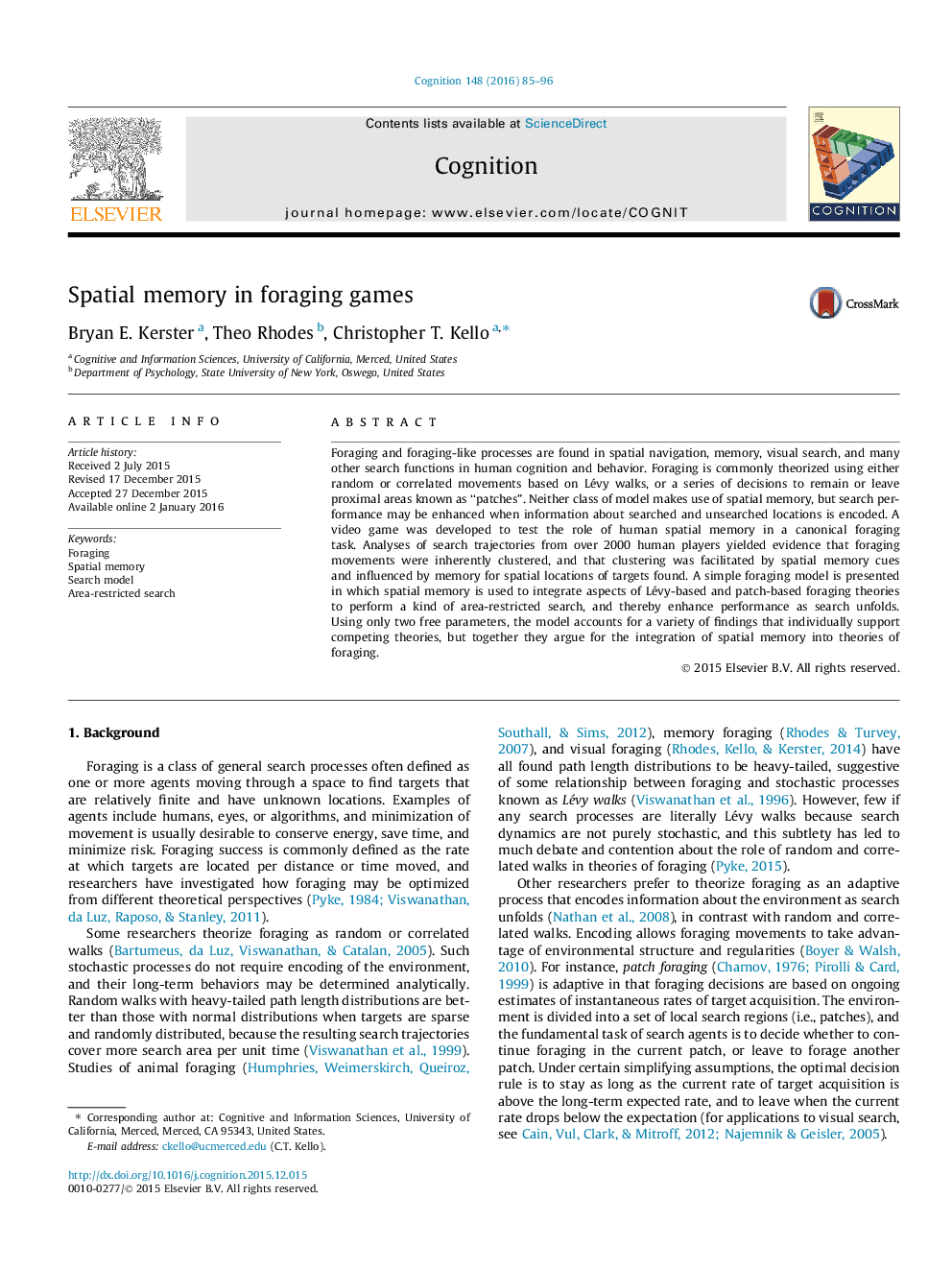| Article ID | Journal | Published Year | Pages | File Type |
|---|---|---|---|---|
| 926330 | Cognition | 2016 | 12 Pages |
•Most current theories of foraging do not consider the role of spatial memory.•We tested effects of spatial clustering in a foraging game experiment.•Performance was enhanced by clustering searches according to target distributions.•An area-restricted search model explains the results using spatial memory.•The model integrates competing theories based on Lévy walks versus patch foraging.
Foraging and foraging-like processes are found in spatial navigation, memory, visual search, and many other search functions in human cognition and behavior. Foraging is commonly theorized using either random or correlated movements based on Lévy walks, or a series of decisions to remain or leave proximal areas known as “patches”. Neither class of model makes use of spatial memory, but search performance may be enhanced when information about searched and unsearched locations is encoded. A video game was developed to test the role of human spatial memory in a canonical foraging task. Analyses of search trajectories from over 2000 human players yielded evidence that foraging movements were inherently clustered, and that clustering was facilitated by spatial memory cues and influenced by memory for spatial locations of targets found. A simple foraging model is presented in which spatial memory is used to integrate aspects of Lévy-based and patch-based foraging theories to perform a kind of area-restricted search, and thereby enhance performance as search unfolds. Using only two free parameters, the model accounts for a variety of findings that individually support competing theories, but together they argue for the integration of spatial memory into theories of foraging.
